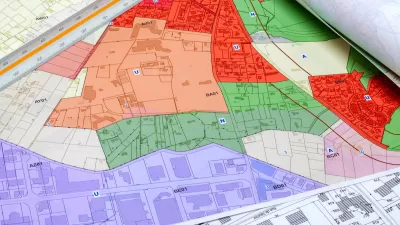A surprise, groundbreaking agreement between China and the United States was unveiled in Beijing at the end of the APEC conference, providing hope that the world can reduce the threat from climate change.
According to the agreement between Chinese President Xi Jinping and President Obama, the United States will reduce "its emissions by 26 percent - 28 percent below its 2005 level in 2025 (and) China intends to achieve the peaking of CO2 emissions around 2030," writes Bill Chappell of NPR's the Two-Way on the landmark agreement reached between the world's top-two carbon emitters.

2008 Global CO2 Emissions from Fossil Fuel Combustion and some Industrial Processes (million metric tons of CO2). Credit: EPA; source: National CO2 Emissions from Fossil-Fuel Burning, Cement Manufacture, and Gas Flaring: 1751-2008.
China has also agreed "to make best efforts to peak early and intends to increase the share of non-fossil fuels in primary energy consumption to around 20 percent by 2030," adds Chappell.
The two leaders' pledges are being called dramatic and ambitious — for the U.S., because Obama's earlier plans had called for a smaller cut in emissions, and for China, because the country had previously resisted calls for it to consider capping its emissions as it grows and modernizes.
An agreement is unlike a climate treaty that would have to be ratified by the U.S. Senate. In addition, "(t)he White House thinks the U.S. can meet these targets without new legislation," says NPR's Scott Horsley, reporting from Beijing for Morning Edition. "That's important, because after last week's midterm elections, we're not likely to see any new climate legislation coming out of Capitol Hill."
I might add that with climate change denier Sen. James Inhofe (R-Ok.) taking the place of Sen. Barbara Boxer (D-Calif.) as chairman of the Environment and Public Works Committee, you can count on that.
FULL STORY: China And U.S., Titans Of Carbon Pollution, Move To Cut Gases

Alabama: Trump Terminates Settlements for Black Communities Harmed By Raw Sewage
Trump deemed the landmark civil rights agreement “illegal DEI and environmental justice policy.”

Study: Maui’s Plan to Convert Vacation Rentals to Long-Term Housing Could Cause Nearly $1 Billion Economic Loss
The plan would reduce visitor accommodation by 25% resulting in 1,900 jobs lost.

Why Should We Subsidize Public Transportation?
Many public transit agencies face financial stress due to rising costs, declining fare revenue, and declining subsidies. Transit advocates must provide a strong business case for increasing public transit funding.

Paris Bike Boom Leads to Steep Drop in Air Pollution
The French city’s air quality has improved dramatically in the past 20 years, coinciding with a growth in cycling.

Why Housing Costs More to Build in California Than in Texas
Hard costs like labor and materials combined with ‘soft’ costs such as permitting make building in the San Francisco Bay Area almost three times as costly as in Texas cities.

San Diego County Sees a Rise in Urban Coyotes
San Diego County experiences a rise in urban coyotes, as sightings become prevalent throughout its urban neighbourhoods and surrounding areas.
Urban Design for Planners 1: Software Tools
This six-course series explores essential urban design concepts using open source software and equips planners with the tools they need to participate fully in the urban design process.
Planning for Universal Design
Learn the tools for implementing Universal Design in planning regulations.
Smith Gee Studio
Alamo Area Metropolitan Planning Organization
City of Santa Clarita
Institute for Housing and Urban Development Studies (IHS)
City of Grandview
Harvard GSD Executive Education
Toledo-Lucas County Plan Commissions
Salt Lake City
NYU Wagner Graduate School of Public Service



























